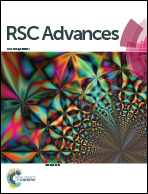Influence of lead-free glass frit in the front contact paste on the conversion efficiency of polycrystalline silicon solar cells
Abstract
Due to the demand for a new environmentally friendly silver front conductive paste, it is imperative for silicon solar cells to use nontoxic lead-free glass frits. In the present paper, three kinds of Bi–Te–B–Si–P–O lead-free glass frits with different mass fraction ratios of B2O3/SiO2 (10/4, 6/8, and 2/12) were prepared by a melt cooling route. First, we investigated that the effect of those B2O3/SiO2 ratios on the transition temperature (Tg) of glass frits, and their Tg were 311 °C, 347 °C, and 366 °C, respectively. Then, the influence of Tg on cross-sectional microstructures of the front-silver electrodes, the Ag crystallites distribution on Si substrate, and electrical performance were studied. The fabricated solar cell showed the lowest series resistance (0.0017 Ω) and the highest photoelectric conversion efficiency (18.260%) based on the glass frit Tg of 347 °C. This is because the dense thick-film Ag grid can reduce the bulk resistance of the grid line. Besides, the glass frit with the Tg of 347 °C could control the growth and homogeneous distribution of silver crystallites in the glass layer and silicon substrate, which contributed to forming good ohmic contacts and tunneling effect with enough energy photoelectrons. The result was compared with the solar cell fabricated with a classical Pb-based glass frit with the conversion efficiency (18.230%) using the same device configuration, which indicated the designed lead-free glass frit could be a suitable substitute for a Pb-based glass frit for preparing environmentally friendly front-side silver paste for crystalline silicon solar cells.



 Please wait while we load your content...
Please wait while we load your content...